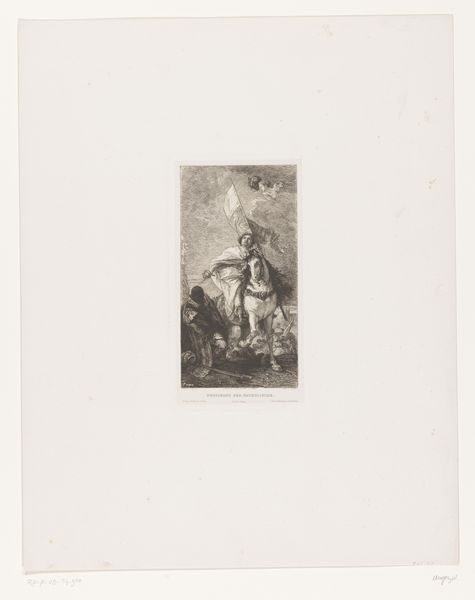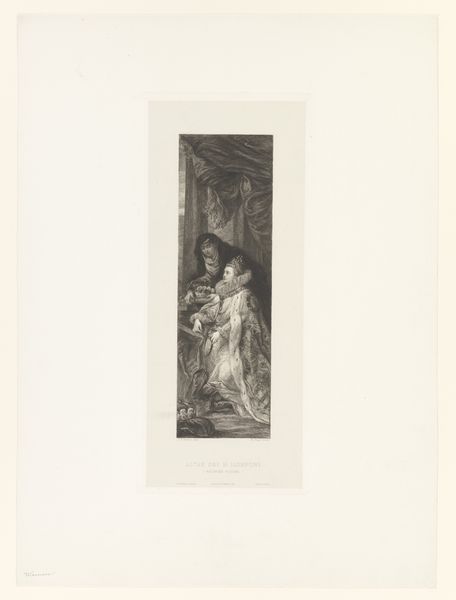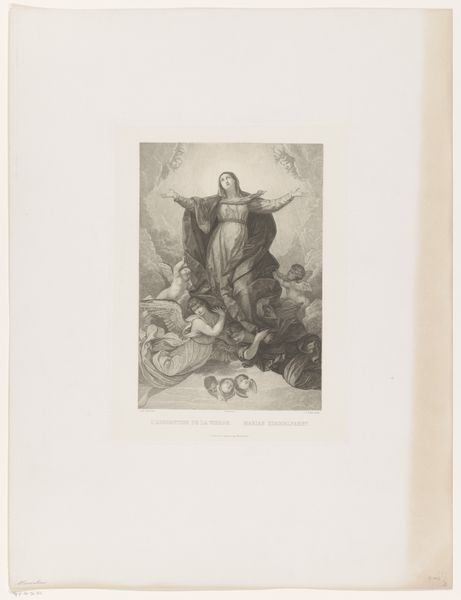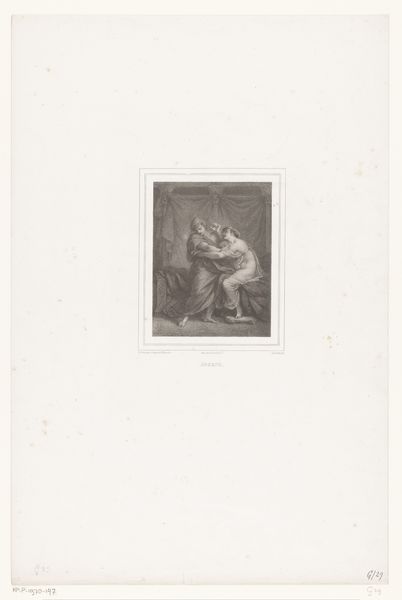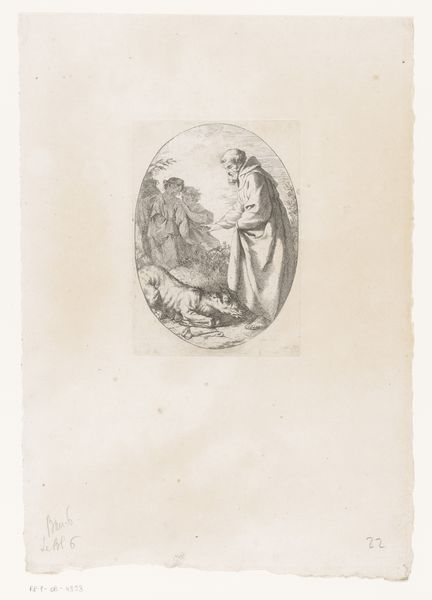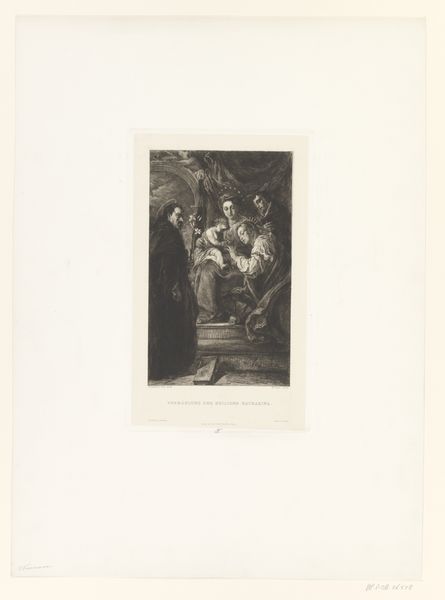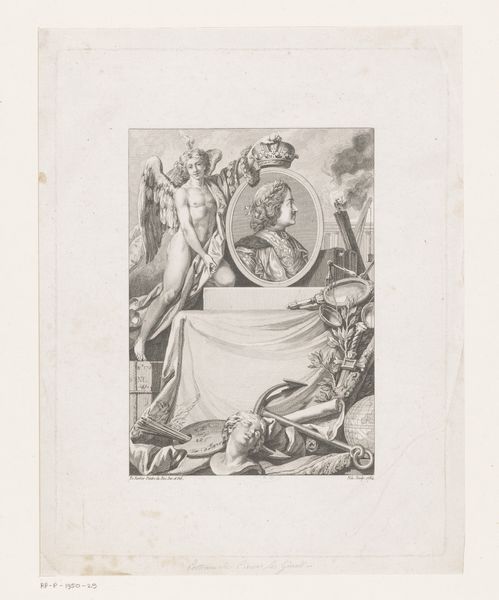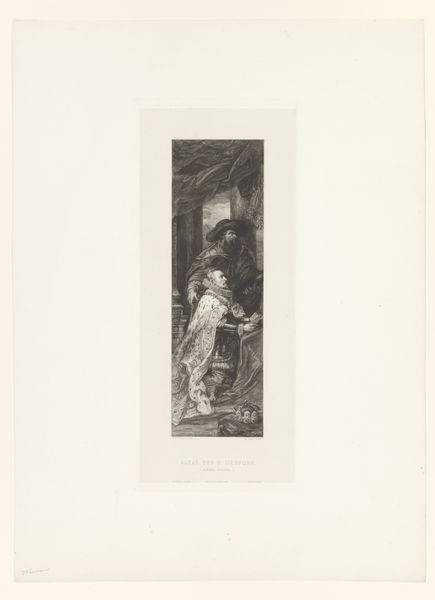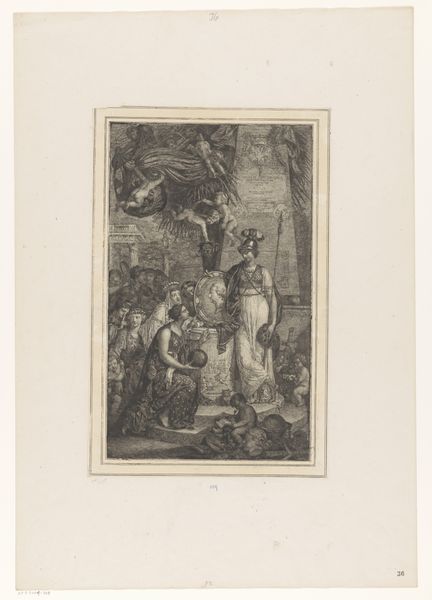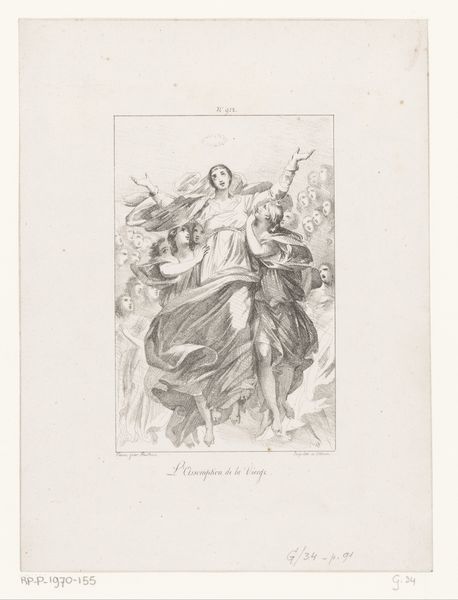
print, paper, engraving
# print
#
old engraving style
#
figuration
#
paper
#
11_renaissance
#
history-painting
#
engraving
Dimensions: height 319 mm, width 220 mm
Copyright: Rijks Museum: Open Domain
Editor: This print, made by William Unger between 1861 and 1889, depicts “Christus verschijnt aan de apostelen,” or “Christ Appearing to the Apostles." The intricate engraving style is stunning, and the scene feels so reverent and theatrical, all at the same time! How do you interpret this work within its historical context? Curator: Unger’s engraving reproduces an existing painting. This print is fascinating not just as a devotional image, but as a *copy* intended for a wider, probably bourgeois, audience. The mass dissemination of religious imagery through prints had a profound impact on religious practice. Were people simply looking at these images, or were they buying and collecting them? How did the burgeoning art market of the 19th century affect personal religious expression? Editor: That's an interesting question about collection versus simple viewing. I hadn't considered the market aspect so directly. It makes me wonder about the role of the museum too—a space where images are now ‘viewed’ rather than necessarily bought, sold, or revered. Curator: Exactly. Unger’s print ends up in the Rijksmuseum, not as a religious icon, but as a piece of art history and cultural history. Does its religious function diminish, become merely symbolic, or gain new significance? The print becomes an object to be examined, researched and interpreted within an institution with its own political, cultural and even financial investment in representing that culture. What function does this print have *now*? Editor: I suppose now it serves as a kind of document—a reminder of the intersections between faith, art, and economics in 19th-century European society, and also something that represents a network of values around it that change as society changes. Thank you. Curator: Precisely. It reveals how visual representations of faith have been transformed by changing cultural institutions.
Comments
No comments
Be the first to comment and join the conversation on the ultimate creative platform.
